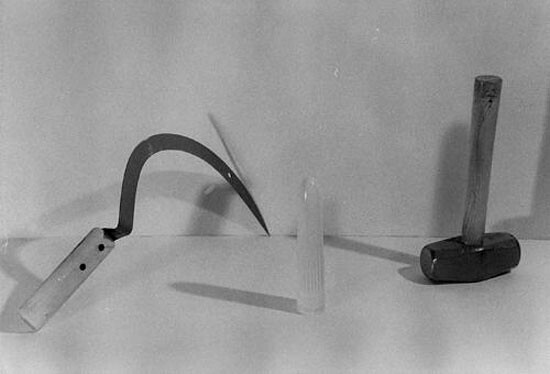My premise is this: that the ways in which we describe and understand artistic labor are integrally tied to how we imagine what artworks should do in the world. Underlying the idea of artistic production as authentic, voluntary, and self-valorizing, for example, is the utopian promise that art is prefigurative, that it can posit in an experimental, provisional way the liberatory modes of being we wish for everybody. Another idea—that art production is exploitative, alienated, precarious, and ultimately only geared toward profit—still contains the promissory note that art (or art criticism) can and should unveil false consciousness, that art can show with unique lucidity our reality just as it is. On the one hand, artists are models for what labor should be; on the other, they have become a terrifying example of what labor is. Authentic or alienated. These paradigms operate in our discussions of artistic labor just as much as they operate in broader discussions of contemporary art and art history. This makes the reverse of my premise just as true: that how we imagine what art should do is intertwined with our idea of artistic labor. What I hope to show is that it is precisely this feedback loop between artistic labor and art’s utopian claims that makes this type of labor different from other types—which is not to say privileged, but different. And in order to grapple with art’s current problems and unfulfilled promises, we need to first confront how and why such contradictory meanings operate in concert within the expanded field of artwork.
A striking example of an artist who seems to unveil the alienated aspect of artistic production is Andy Warhol. In asserting his desire “to be a machine” and to make “Business Art,” Warhol eschewed creativity as an artistic value, since for him being a machine meant being standard, the very same as everyone else. In an oft-cited 1963 interview for Art News, Warhol explained this idea in his characteristically coy and circuitous manner:
Someone said that Brecht wanted everybody to think alike. I want everybody to think alike. But Brecht wanted to do it through Communism, in a way. Russia is doing it under government. It’s happening here all by itself without being under a strict government. Everybody looks alike and acts alike, and we’re getting more and more that way. I think everybody should be a machine. I think everybody should like everybody.1
Statements like these have been interpreted as unlocking the meaning of Warhol’s appropriation of mass cultural images. Focusing on this level of signification, some have argued that Warhol’s Pop leveled formerly vertical notions of culture, introducing a vernacular iconography in order to radicalize and ultimately democratize the realm of “high” art. This was a particularly salient interpretation in West Germany, where, as Andreas Huyssen has shown, a vibrant leftist student movement adopted Pop as part of its battle cry against outdated societal values and hierarchies.2 And indeed, as echoed in his mention of Brecht above, Warhol first deemed his practice “commonism,” confounding the Cold War opposition between capitalist and communist economic systems and drawing out their similarities as mass and massifying cultures.
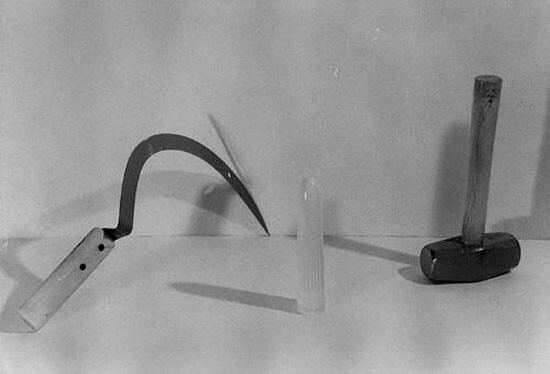

Others have argued, on the other hand, that Warhol captured a darker side of collective desire as expressed through commodities and celebrities. Images like Marilyn Diptych (1962), a screen print of twenty-five headshots of Marilyn Monroe arranged in a 5 x 5 grid, with half the Marilyns printed in vibrant three-tone color and half in gradually fading black and white, suggest that glamorous images only manifest false promises and ultimately lead to destructive consumption practices.3 That Warhol created this work just after the actress’s death only underlines this point. But however one interprets Warhol’s appropriation of advertising, print media, and celebrity images, all must contend equally with assumptions as art as with the wider sphere of culture and the mediated image environment emerging in postwar America.
An analysis of Warhol’s work in the realm of artistic labor is just as difficult to parse—forcing us to ask what, if anything, is unique about artistic labor. Warhol embraced the Taylorist logic of assembly-line production and the managerial position inherent to it, opening his first Factory in 1963 at the site of a former hat manufacturer in Manhattan.4 As evident in series of photographs taken of him at work, Warhol delegated most of the actual production of artworks to others. Rather deliciously, but not at all ironically, this has led the Andy Warhol Foundation to formulate increasingly rigid criteria for determining what makes an “authentic Warhol” (and with the recent sale of Silver Car Crash for upwards of $105 million dollars, this controversy seems to have only added monetary value to “his” work). Responding to the heroic individualism asserted by Abstract Expressionism (and so notably not responding to authorship based on skill but rather on the authenticity of an expressive individual), Warhol’s work forces us to confront the production of art and its value in its resolutely social form. But no matter how much Warhol delegated production, he could not equally distribute his aura. Everyone can’t be a Warhol, and his collaborators never were. His Factory model shows the persistence of hierarchies in even the most collective forms of production, even when accompanied by appropriately wry circumspection and deflection. Warhol epitomizes this paradox, which is inherent to social production in the capitalist image economy: he delegated his work, dispersing and even deriding authorship, and it was precisely this networked participation and production that contributed to his celebrity status. So while Warhol embodied the artist as manager, he was less the “Organization Man” of the 1950s and more of a Mark Zuckerberg or Jack Dorsey of today.5 Like these social-network figureheads, Warhol is a beneficiary of others’ participation in his culture of cool. His factory is in fact a social factory, because he collapses distinctions between producing a product and producing oneself. But whether we see this as a critical gesture, and condemn the system, or a complicit one, and condemn the artist, Warhol’s work—labor here, not image—shows us the exploitative edge of this field of collective production. It is more than just the fact that Warhol’s network continued to be subsumed under his signature. It is that Warhol paints a picture of the art scene as the quickest route to an alienated existence, one in which the human is a machine and there is no pretense or resistance to how social value crystallizes into an object or author.
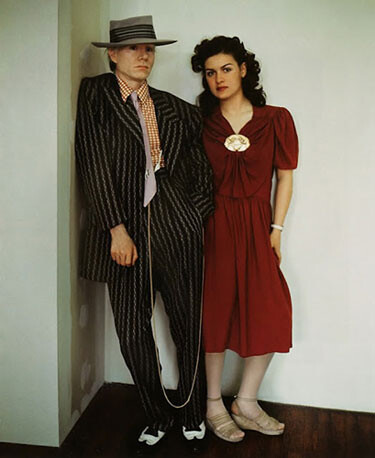

On the other end of the spectrum, an artist who holds out the promise of artistic labor as liberatory for both society and the self is Joseph Beuys. Beuys is known for his assertion that “everyone is an artist,” and it is important to note that this assertion relied on a particular ideal of artistic labor that equated it with creativity in general. We could say that if Warhol is the Marx of Capital, focusing on the modes of production in the factory (i.e., labor that is already alienated), then Beuys is the early Marx of the Economic and Philosophical Manuscripts of 1844—fixated on species-being, labor as unfettered creativity, the self-valorizing social production of the world.6 Beuys seemed to be thinking as much when he described his idea of social sculpture in a text from 1971, not shying away from Marxist language in the least:
This most modern art discipline—Social Sculpture/Social Architecture—will only reach fruition when every living person becomes a creator, a sculptor or architect of the social organism … EVERY HUMAN BEING IS AN ARTIST who—from his state of freedom—the position of freedom that he experiences at first hand—learns to determine the other positions in the TOTAL ART WORK OF THE FUTURE SOCIAL ORDER. Self-determination and participation in the cultural sphere (freedom); in the structuring of laws (democracy); and in the sphere of economics (socialism).7
Beuys reconnects labor to the creative will of human beings, our self-determination and self-realization. By equating labor with this expansive notion of creativity, he tries to wrest creativity from capitalism, where it is alienated, objectified, monetized, fetishized. Beuys wants to return labor/creativity to the center of how we define ourselves as humans, reminding us that while we produce and are produced by capitalist social relations, we cannot be reduced to them. He has transformative ambitions as well. He believes that recasting labor as a fundamentally creative activity will generate a new society—from social sculpture comes new social relations, and from new relations comes a new economic and political reality.
Significantly, Beuys and Warhol draw upon different notions of the machine, which explains some of the contrasts between their respective performances of artistic labor. While for Warhol the machine means rote standardization, the reduction of labor to repetitive and uncreative tasks, Beuys has his “electricity theory,” which reframes mechanization in vitalistic terms. Beuys imagines electricity as a material manifestation of social creativity—an expansion of his idea of social sculpture. At once material and immaterial, electricity is a kind of energy-matter hybrid that pulsates and animates, connecting individuals to other individuals around them and manifesting a collective flow and power with which to produce, together, a world. Often, historians and critics focus on how Beuys’s ideas about energy and electricity are meant to vivify objects, leading to an analysis of Beuys as a mystical and mystifying fetishist.8 However, Beuys sought resolutely to combat fetishism, putting ideas of labor and social relations at the center of his artistic practice and striving to render them visible. Beuys struggled with how to do this, producing, on the one hand, complex informational maps on blackboards in his lectures, and on the other, densely signifying assembled objects.
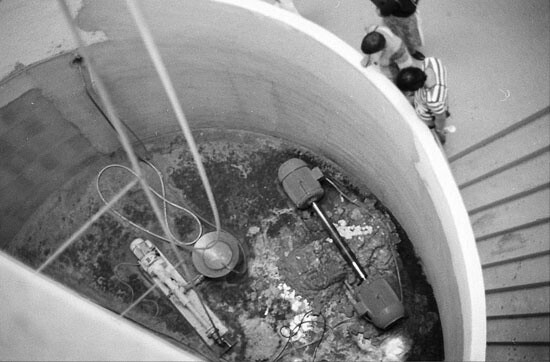

His most explicit articulation of this idea of electricity as materialized social energy, creativity, and relations is Honeypump in the Workplace, Beuys’s project for Documenta 6, held in 1977. This work consisted of the Free International University, a series of lectures, discussions, and performances on themes ranging from nuclear energy and its alternatives to human rights and unemployment. Beuys also installed a motorized pump, lubricated with over two hundred pounds of margarine, which circulated two tons of honey through a tangle of plastic tubes that spanned the event space at the Museum Fridericianum. Running continuously over the entire one hundred days of the exhibition, Beuys saw the machine as a symbol, catalyst, and carrier for the energy being generated by the activities of the Free International University. Honeypump is not the first Beuys work to use the sticky substance. Honey also appeared in How to explain pictures to a dead hare (1965), where it covered the artist’s head along with sheets of gold leaf. But honey as a metaphor for social organization comes to the fore with particular clarity when paired with the University. Beuys’s metaphorical use of honey is a willful misreading of Marx’s discussion of the difference between human constructions and the constructions of bees: even the worst human architect imagines his or her structure before making it, while bees (purportedly) work according to mere genetic programming. By using honey as his central material, Beuys suggests a reversal of Marx’s terms, holding up the social production of bees as a model and rejecting the idea that to create a form, one needs a blueprint to follow.
With energy as a metaphor and Honeypump as its materialization, Beuys invokes a romantic ideal of creativity and collectivizes it. Labor is understood broadly as the creation of oneself and, simultaneously, the world. Honeypump in the Workplace is also where Beuys began to reimagine the concept of money in terms of flows of energy rather than crystalized objects. In a text titled “Theory of Money as the Bloodstream of Society,” written together with this student Johannes Stüttgen, Beuys tries to imagine how money could socialize value rather than privatize it. His logic is circuitous and his path overlong for this venue.9 But the point is that Beuys works from an idea that the liberatory sort of labor that is at once social and self-valorizing already exists, if we can only unravel the objects and operations that obscure it. This is a romantic idea of labor as creativity, and an even more romantic idea of the artist as messianic deliverer of this ideal. But it is meant to contrast with the world of work as it is, holding out “artistic production” in admittedly performative and spectacular ways to highlight how it differs from other modes of work.
It should be apparent by now, however, that despite their rhetorical separation, Beuys’s romantic ideal of self-valorizing artistic creation was of a piece with Warhol’s alienated system of factory-made art. Why was Warhol’s factory so appealing, if not because it offered participants another kind of value? It might be hard to describe this value as creative, but it is easy to call it social—the value found in being part of something fun, cool, desublimating. And Beuys, for his part, did not succeed in dispersing authorship or inspiring everyone to be an artist, which provokes the critical question: Why isn’t everyone an artist? To explain why, we have to look at the systems that Warhol laid bare—systems that continue to maintain hierarchies, elevating some people at the expense of others. The rarified separation of art from everyday life made works produced in the Factory subject to expert authentication and proved too much for Beuys to overcome, while the desiring subject Beuys both embodied and sought to represent was always there in Warhol’s factory, boxing up Brillo or operating the silkscreen.
What does it mean that these artists who related to artistic labor in such opposing ways are so mutually implicated? I would venture to say that it is because art cannot be reduced to an economic activity. Efforts to separate artistic labor, which is supposedly unalienated, from ordinary capitalist labor, which is anything but, blind us to the ways that contemporary artistic labor functions and is legitimated through a combination of the two ideals embodied by Warhol and Beuys. We know very well how to critique the ways in which an idealization of artistic labor (embodied by Beuys) eclipses or even justifies exploitative practices. For this reason, many contemporary discussions of artistic labor begin from art’s economic and institutional base, highlighting the material conditions of artists, interns, curators, and staff. The premise here is that art workers are workers like any other—and from this emerges a very rich historical model for analysis and resistance: art worker strikes, campaigns against unpaid internships, expansion of union benefits to precarious laborers, and protests against unfair labor practices in museums, just to name a few. There is an astounding amount of activity and organizing that can be generated from this premise and its attendant focus on art’s institutional infrastructure and the art worker’s position within it—but this is only part of the picture. Like current struggles in the university, it is necessary to confront the way that art holds out a space of sanctuary at the same time that it exploits that space and our belief in it.10
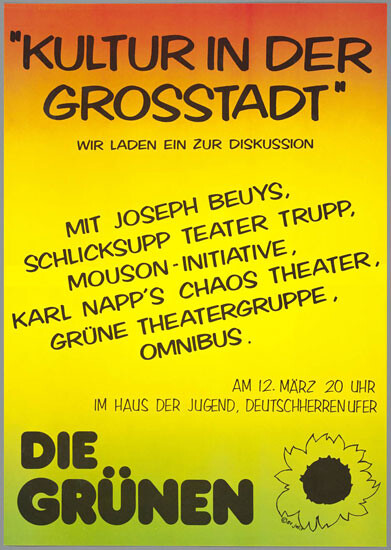

Art is not simply the place where desires get expressed and monetized. It is also where desires get fulfilled and monetized. There will always be a remainder, and that remainder is the libidinal investment in art as a space different from other spaces, and in creativity as a more expansive ideal of production. The persistence of this remainder demands a critique of artistic labor that goes beyond the terms offered by political economy, a critique that takes seriously those desirous investments that become entwined with—but are not reducible to—art’s institutions and economic engines. Such a critique would confront the potential for transformation and revelation that persists in and through art and artwork, as well as in and through capitalism (insofar as capitalism has both a parasitic and productive relation to our broader sense of social life). We cannot separate a critique of one from a validation of the other. This is not false consciousness. It is the knot that inexorably binds the legitimation crisis of institutions to the legitimation crisis of the self. This knot is familiar to those who are used to thinking about how to forge a generative rather than a subsumptive relationship between art and politics. It is also increasingly familiar to those struggling to analyze the labor performed on Facebook, Twitter, and other economies of desire that congeal social relations into a form.11 Beuys and Warhol prefigure this tangled web, producing a vision of value as simultaneously obscured by its objectification and visualized in its networked expanse. If anything, art is free from the instrumental, practical mandates of labor organizing, and so it is a good place to start thinking through the paradoxes that would otherwise paralyze immediate action. The strength of Warhol and Beuys is how they capture and visualize the contradictions of artwork, pushing us to think of art as an economic activity whose sole purpose is not economic. Art is not an escape from alienation, but it not the perfect crystallization of it either. To hold these two in tension continues to be our challenge and our task.
Andy Warhol, “Interview with Gene Swenson,” in Art in Theory, 1900–2000: An Anthology of Changing Ideas, eds. Charles Harrison and Paul Wood (Malden, MA: Blackwell, 2003), 747. Original citation: “What is Pop Art? Interviews with Eight Painters (Part I),” Art News (November 1963).
Andreas Huyssen, “The Cultural Politics of Pop: Reception and Critique of US Pop Art in the Federal Republic of Germany,”New German Critique 4 (Winter 1975): 77–97. For another perspective on the implications and contradictions of these democratizing claims for Pop, see Benjamin Buchloh, “Andy Warhol’s One-Dimensional Art: 1956–1966,” in Kynaston McShine, Andy Warhol: A Retrospective (New York: MoMA, 1989), 39–61.
See, for example, Thomas Crow, “Saturday Disasters: Trace and Reference in Early Warhol,” Modern Art in the Common Culture (New Haven: Yale University Press, 1996), 49–65.
Caroline Jones explains: “The adoption of the name ‘Factory’ was a collective effort on the part of Warhol and his collaborators (primarily Billy Linich/Name and Gerard Malanga), clearly intended to displace the time-honored trope of the isolated studio with a term that would make room for them all in its collective embrace.” See Caroline A. Jones, Machine in the Studio: Constructing the Postwar American Artist (Chicago: University of Chicago Press, 1996), 192–198.
By attaching Warhol to the manager model, not only of the factory but also of the more affective economy of “coolness” and culture, I am expanding upon Jones, who argues that “the Factory and its productions were complex signifiers, shifting from the proletarian to the executive to the consumer, playing with gender and power in a social and cultural context that was itself in heady flux.” Jones, Machine in the Studio, 189.
Thierry de Duve argues that Beuys embodied an idea of the proletarian/bohemian, connecting Beuys very much to the notion of species-being in early Marx. See Thierry de Duve, “Joseph Beuys, or The Last of the Proletarians,” October 45 (Summer 1988): 47–62.
Joseph Beuys on the Organization for Direct Democracy, reproduced and translated in Caroline Tisdall, Joseph Beuys(New York: Guggenheim Museum, 1979), 268–269.
For example, see these highly disparate arguments about the nature of the social relations that Beuys gives form to and how: Donald Kuspit, “Beuys: Fat, Felt, and Alchemy,” Art in America (May 1980): 78–89; and Benjamin Buchloh, “Beuys: The Twilight of the Idol, Preliminary Notes for a Critique,” Neo-Avantgarde and Culture Industry (Cambridge, MA: MIT Press, 2000), 40–64. Also see Jan Verwoert, “The Boss: On the Unresolved Question of Authority in Joseph Beuys’ Oeuvre and Public Image,” e-flux journal 1 (December 2008), →.
To give an idea, it begins: “The development of a new concept of money follows logically from the description of creativity and ‘ability value’ which recognizes the flow of human beings to the places of production as the real capital.” For the full text, see Tisdall, Joseph Beuys, 264.
In their 2004 essay “The University and the Undercommons” (now part of a book), Fred Moten and Stefano Harney struggled with this very paradox: “It can not be denied that the university is a place of refuge and it cannot be accepted that the university is a place of enlightenment.” They discuss the continual constitution of insides and outsides, critical modes and complicit ones, formed ultimately to legitimize the university as a whole. The absence of any utopian, redemptive language is striking, but so is the lack of total dismissal or fantasy of exodus or escape. Fred Moten and Stefano Harney, “The University and the Undercommons: Seven Theses,” Social Text 79 (Vol. 22, No. 2) (Summer 2004): 100.
For an analysis of the darker side of these practices, see the essays compiled in Digital Labor: The Internet as Playground and Factory, ed. Trebor Scholz (New York: Routledge, 2012).
Category
A version of this text was originally delivered as a presentation on the occasion of the exhibition SOLO SHOW* at e-flux, Tuesday November 17, 2013.
